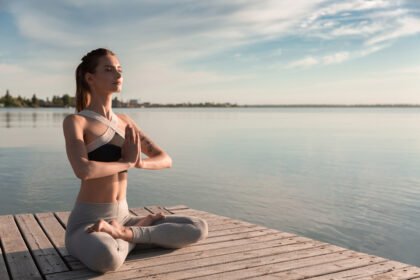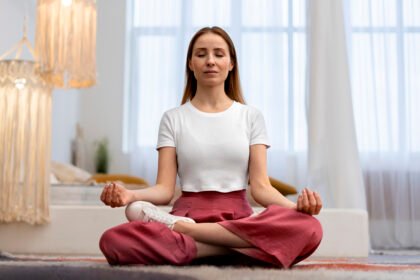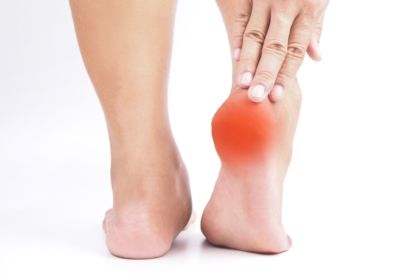Yoga
Indeed, the word “yoga” can provide a person with a great deal of relief. When done correctly and under professional supervision, it can provide amazing outcomes. Yoga is a very accessible and safe approach for people of all ages to stay active. It enhances our mobility and posture. Additionally, it calms us down and lessens the sensation of aches and pains by relaxing our minds. Yoga helps everyone heal or lessen even the most serious illnesses, whether they are depression, severe stress, asthma, diabetes, cholesterol, or eventually cancer. Everyone benefits greatly from yoga, a type of mind and body relaxation, whether they are obese and trying to lose weight or just need to relax and unwind. It promotes balanced physical and mental health while aiding in weight loss. The main goals of the many yoga positions are to increase muscular tone, focus, and bodily flexibility. Although yoga is not typically thought of as an aerobic activity, some forms of yoga are more strenuous than others. Yoga poses that are vigorous and active help you burn the most calories. This could help keep you from gaining weight. More physical forms of yoga include vinyasa, power, and ashtanga. Learn how yoga stances and postures can help you reenergize your vital energy to heal illnesses and enhance your overall health.
Yoga's Benefits
Regular yoga practice has the following health benefits.
Better posture and physical flexibility
To be strong, soft, and flexible, all you have to do is incorporate yoga into your daily practice. Your muscles and body are strengthened by regular yoga practice. It alleviates physical pain and enhances the body’s sitting and standing postures.
Improved intuition
Meditation and yoga strengthen your intuition. This is the worker; you just need to experience it to know what to do, when to do it, and how to do it to get good results. Thus, engage in regular yoga practice.
Loss of Weight
Kapalabhati Pranayama and Surya Namaskar help people lose weight. Aside from this, doing yoga regularly helps us comprehend the kind of meals we should eat. It also aids in weight control.
Relief from Stress and Anxiety
Practicing yoga for a short while each day helps to alleviate the stress of the day. issues that are both mental and physical. Meditation, pranayama, and yoga poses are all useful stress-reduction techniques.
Overall health and fitness
When your physical, mental, and emotional well-being are all in balance, you are considered perfectly healthy.
Types of Yoga
Find more about the advantages of ten various forms of yoga.
Yoga Acro
Acroyoga is a physical exercise that blends yoga with acrobatics. Group acrobatics and various partner exercises where at least one person is lifted are included in acroyoga. It also incorporates dance acro, cheerleading, and circus arts customs.
Yoga Kundalini
This type of yoga incorporates breathing techniques, repetitious positions, singing, and chanting. The goal of Kundalini Yoga is to awaken your energy, or shakti. It is believed to be a spiritual energy that resides in your spine.
Yoga Ashtanga
The sage Vamana Rishi documented this yoga system in the Yoga Korunta, which is supposed to include lists of extremely unique teachings on bandhas, philosophy, vinyasa, mudras, and Drishti. It has numerous asana groupings as well.
Yoga Vinyasa
In contemporary yoga poses like Ashtanga Vinyasa Yoga, Bikram Yoga, and Vinyasa Krama Yoga, a vinyasa is a fluid transition between asanas, particularly when movement and breath are combined.
Yoga Hatha
This branch of yoga is usually the first thing that comes to mind when you think of yoga in general. Classes typically focus on breathing and meditation, and the practice encompasses the body, mind, and breath.
Healing Yoga
This type of yoga involves doing asanas for longer periods of time than in typical yoga courses, frequently with the help of props like folded blankets to help the body relax.
Yin Yoga
In contrast to other forms of yoga, it is a slower-paced workout method that incorporates postures (asanas) and concepts of traditional Chinese medicine that are held for longer periods of time.
Yoga Sivananda
Sivananda Yoga, which was founded by Swami Vishnudevananda, is a spiritual kind of yoga that goes beyond using asanas for physical activity.
Yoga in the Air
This hybrid style of yoga was created in 2014 and incorporates classic yoga poses, dancing, and pilates. It also makes use of a hammock.
Strength Training
It is a popular word for a rigorous, fitness-focused style of yoga. Power yoga combines several of Ashtanga’s vinyasas and athleticism, but it also allows teachers to teach any posture, so each class is unique.
Yoga for Postural Issues and Diseases
Arthritis Yoga
These are some yoga positions and techniques that are beneficial for arthritis that were developed by Ms. Namita Piparaiya, founder of Yoganama and a specialist in yoga and ayurvedic lifestyle.
Vyvayama Sukshama
The majority of these mild joint rotation exercises can be performed while lying down, but they can also be performed while seated in a chair. Doing these joint activation exercises on a regular basis keeps the joint lubricated and helps to avoid pain and stiffness.
Exercises for Breathing
It is recommended to perform breathing techniques both prior to and following the yoga session. More heating exercises, such as Bhastrika or Kapalabhati, can be performed initially since they help to warm the body and improve circulation. After the session, you can engage in more calming and contemplative pranayama techniques like alternate nostril breathing or equal breathing.
Salutations to the Sun
These are energizing and revitalizing, but you should be careful to adjust the order to your own state. Bending forward, for example, can make lower back pain worse. Instead of making your hands reach for the floor in this situation, it is better to rest them on a chair.
Maintaining Positions
To increase strength and stability, hold each posture for five to nine breaths. Correct alignment is crucial for maintaining poses so that we are solid and powerful. It is not good for the joints to do poses with poor form repeatedly. For the lower back, Bridge Pose is beneficial. The knees and legs benefit greatly from warrior poses. Balance is enhanced in Tree Pose. The cat-cow stance is a great way to discover spinal fluidity. For total relaxation and healing, corpse pose is ideal.
Yoga for Pain in the Back
One of the most prevalent conditions that most of us deal with these days is back discomfort. Back discomfort can be caused by a variety of factors, from lifestyle choices to more serious illnesses like spondylitis or scoliosis. Additionally, back discomfort may be muscular or related to the spine and nerves. Postural abnormalities are the most common cause of back discomfort, particularly among students, working professionals, and stay-at-home moms. Four natural bends in our spine aid in load carrying and stress absorption. Your muscles attempt to return the spine to its natural curves when you stray from them (for example, because of poor sleeping habits or poor posture). Back pain results from this ongoing strain on the spine and muscles.
A backward hunch
This commonly happens as a result of spending too much time on a laptop, stooping over books, or staring at a phone. The muscles in the neck and upper back tighten as a result, and the upper back becomes spherical. Pain may result from this rigidity. Puppy position is one of the best upper back stretches. Additionally, Mastyasana can assist release tension in the upper back.
Bhujangasana
overly pronounced lumbar curve. This can result in severe lower back discomfort, especially when combined with weak lower back muscles. Women typically have an oversized lower back curvature, particularly during and after pregnancy. Some lower back stretches, such as sphinx position, reclined pigeon pose, and bhujangasana, can help with this problem. Child’s pose and the reclining spinal twist are two stances that help ease the lower back.
Navasana
Finally, strengthening the back is one of the most crucial things to accomplish. Weak back muscles may be the only cause of your back pain. Navasana, vashishtasana, shalabhasana, and setubandhasana are a few poses that help build stronger back and core muscles.
What Role Does Yoga Play in Healthy Weight Loss?
By increasing your metabolism, yoga helps you become more flexible and strong. Some well-known yoga poses that have several health benefits, including weight loss, include Surya Namaskara (Sun Salutation), Urdhva Dhanurasana (Wheel Pose), Trikonasana (Triangle Pose), Navasana (Boat Pose), Prasarita Padottanasana (Wide Stance Forward Bend), Virabhadrasana (Warrior Pose), and Dhanurasana (bow pose). Yoga helps you become more in tune with your body, which enhances your mental self-perception and sense of wellbeing. Yoga can also help with weight loss by lowering stress and stress eating. According to yoga instructor Reema Vengurlekar, “dependable yoga practice empowers a solid way of life, making it practically certain that you will have the option to keep up your weight reduction.”
Asthma Yoga
One of these issues is asthma. It is a long-term, chronic illness of the respiratory system that impacts the lungs. To put it simply, asthma obstructs airways and makes breathing extremely difficult. For this reason, both contemporary medical science and ancient Indian medical professionals believe that yoga can help someone with this serious ailment. Similarly, try various yoga poses to solve this issue. Here are few that yoga instructor Rashmi Singh shares:
Bharastika
The Bharastika yoga pose, which is referred to as the breath of life, involves vigorous breathing and exhalation to provide the body a full supply of oxygen. Asthma-related issues can be resolved and lung power increased with this yoga pose.
Pranayama Anulom Vilom
Very simple to complete, Anulom Vilom Pranayam helps people with asthma, lowers stress and sadness, and enhances lung function.
Pranayama Kapalbhati
Practice Kapalbhati Pranayama to enhance the functioning of your respiratory system. This is a great breathing method that has been used for many decades.
Pranayama Nadi Shodhana
The advanced Anulom Vilom Pranayama level is Nadi Shodhana Breathing, also known as Alternate Nostril Breathing. Nadis are used here. The human body’s nadis are energy conduits that become obstructed in an asthmatic. In fact, this pose eases depression, opens the clogged Nadis, provides the body with adequate oxygen, and lowers tension.You can even do these few yoga poses every day, but only with professional supervision.
Diabetes Yoga
One metabolic disease is diabetes. Type 1, type 2, and gestational diabetes are the three forms of diabetes that most frequently afflict people. Did you know that diabetes may be treated with yoga? Yoga can help people with diabetes control their condition. By improving your body’s response to insulin, asanas help your cells release glucose and turn it into energy.
The diamond pose, Vajrasana
Unlike other yoga postures, it is a beginner-level kneeling stance that is particularly beneficial after eating.
Pose of Halasana (Plow)
When performed in the morning on an empty stomach, halasana is most effective. You must perform this intermediate yoga pose for at least 30 to 60 seconds.
Actions to take while Yoga
It is best to perform asanas in an area that is quiet and insect-free.
Asanas should always be performed on a spotless, level surface.
When in a supine position, always use a blanket.
Avoid wearing watches, jewelry, glasses, or hair grips when performing asanas. They might get damaged or injure people.
Avoid strenuous activities like swimming, weightlifting, jogging, and cycling right after yoga. Spend at least 20 minutes resting before beginning strenuous exercises.
Kriyas should always be performed first in yoga, followed by Asanas, Pranayama, Chittashuddhi, and Yoga Nidra.
You should not wear loose or flowing clothing.
Avoid eating large meals for less than three hours prior to the yoga practice.
Avoid drinking anything at all while doing yoga.
Conclusion
Enjoy the feeling of total well-being that comes after doing yoga and meditation! The greatest thing about yoga is that, despite not being as strenuous as a standard aerobics program, it nevertheless strengthens our bones, lubricates joints, and allows us to balance our bodyweight. People also love it more because of its minimal impact nature. This implies that it will be simpler to maintain regularity and consistency in the practice.
Related Articles
Engaging in Yoga for Bone Health: Using Movement to Prevent Osteoporosis
Osteoporosis, a silent thief that weakens bones and heightens fracture risk, impacts…
How to Perform Pranayam: The Health Advantages of Kapalbhati
Pranayam, the ancient yogic practice of controlled breathing, has surged in popularity…
Are You Having Pain in Your Heels This Wedding Season? This is how these yoga poses can be beneficial.
Wedding season is a time of joy, celebration, and long hours on…




